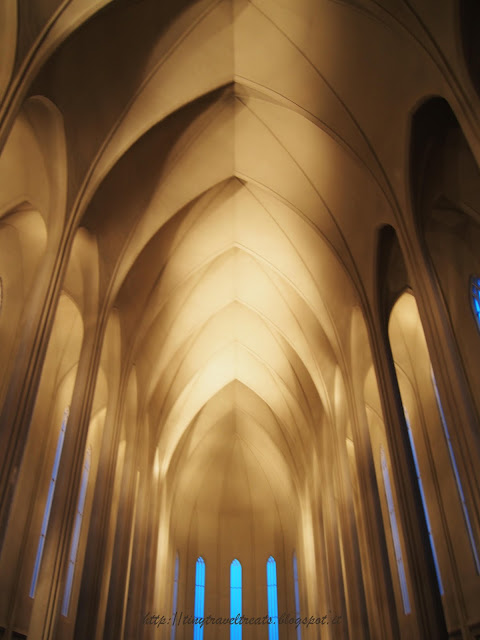No Ornament No Crime
"The herd must distinguish themselves by the use of
various colors, modern man uses his clothes like a mask. His individuality is
so strong that he does not need to express it any longer by his clothing. Lack
of ornament is a sign of spiritual strength. Modern man uses the ornaments of
earlier and foreign cultures as he thinks fit. He concentrates his own powers
of invention on other things."
Adolf Loos, Ornament
and Crime, 1908
Reykjavik skyline is
dominated by a "large famous tower", as one bus driver described
while trying to lead the way to his passengers, that is the Hallgrimskirkja
(Hallgrim's Church). While there are number of other churches around that
represent marvelous examples of modern architecture, this special one is the
largest and the most iconic one of them all. It rises up to the sky by
mimicking the Iceland's basalt columns that appear to have emerged from the
ground in shapes of almost-too-perfect polygons and rewards the visitors with
iconic views of its city where its luminiferous apex crowns the sky. Its
elegant simplicity complements the architecture of the city and the Icelandic
lifestyle. The serenity surrounds one, penetrates in and invites him/her to
experience the inside. The intentional lack of any ornament empowers the thrust
in the play of light and shadow along the curvilinear planes of the sanctuary
as it was aimed with its original design which dates back to the 20th century.
It was an era that was identified by heated debates in modern architecture, an
era in which the rejection of copying previous styles broke the cycles, an era
when Adolf Loos stated that "the ornament is crime".
Thus, the
designed lights and shadows of the Hallgrimskirkja seem to have been designed
to state its own spiritual strength which is so strong that it is in no need of
any ornament, in no need of any colour, and in need of only the divine source
of light.
No
ornament, no crime.



Comments
Post a Comment